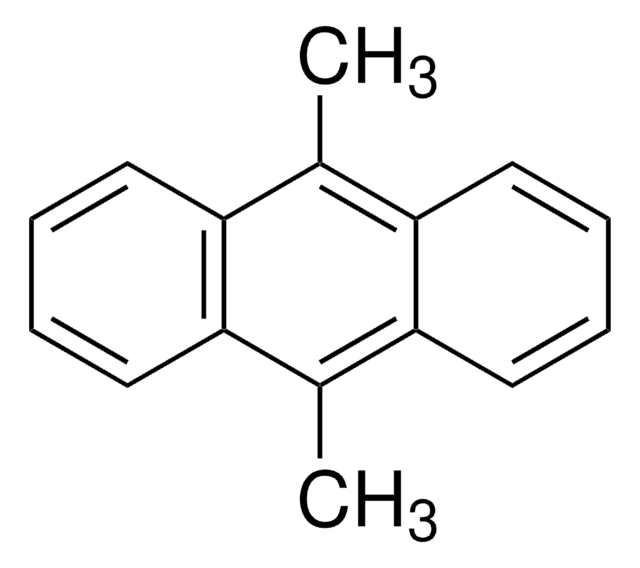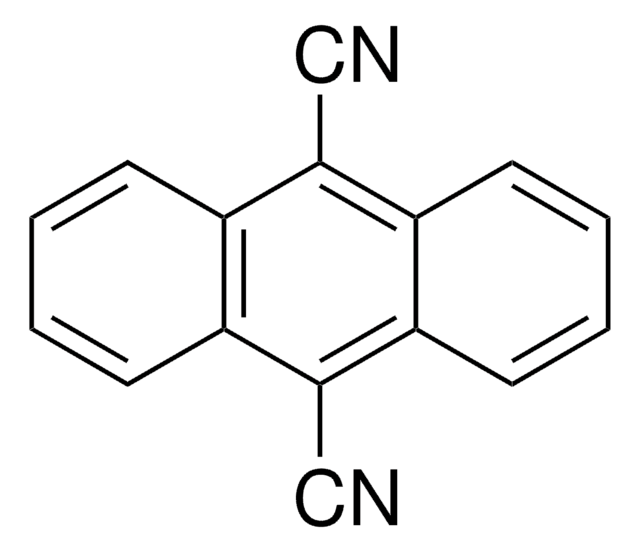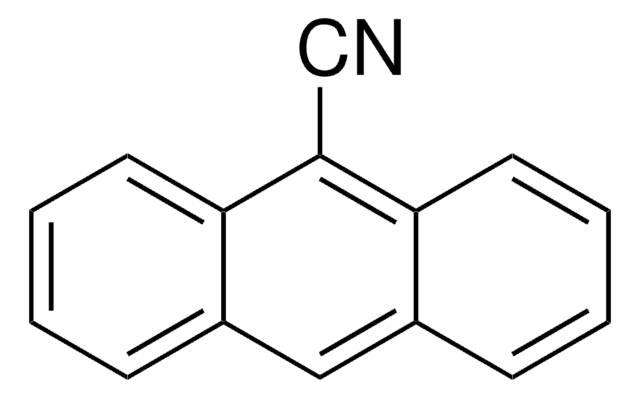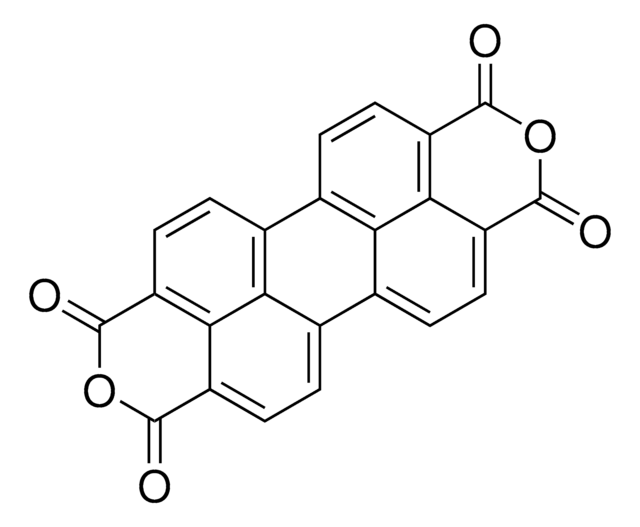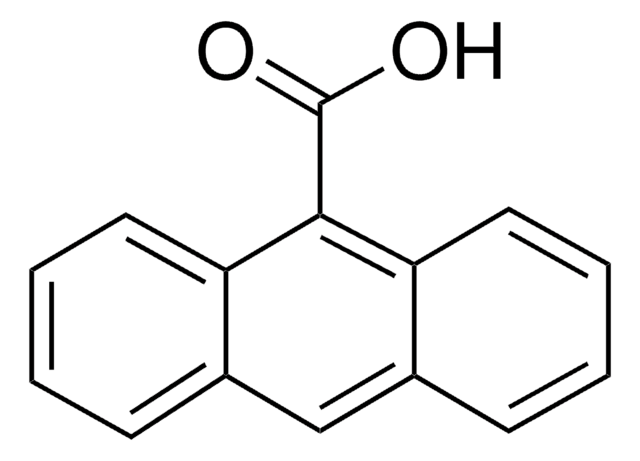All Photos(3)
About This Item
Empirical Formula (Hill Notation):
C18H18O2
CAS Number:
Molecular Weight:
266.33
MDL number:
UNSPSC Code:
12352100
PubChem Substance ID:
NACRES:
NA.22
Recommended Products
Assay
97%
mp
117-119 °C (lit.)
SMILES string
CCc1ccc2c(OC)c3ccccc3c(OC)c2c1
InChI
1S/C18H18O2/c1-4-12-9-10-15-16(11-12)18(20-3)14-8-6-5-7-13(14)17(15)19-2/h5-11H,4H2,1-3H3
InChI key
SURWYRGVICLUBJ-UHFFFAOYSA-N
Looking for similar products? Visit Product Comparison Guide
Related Categories
General description
2-Ethyl-9,10-dimethoxyanthracene (EDMA) has been reported as a potential anthracene photosensitizer for diaryliodonium and triarylsulfonium salts.
2-Ethyl-9,10-dimethoxyanthracene is reported to possess antihistaminic activity. Photoinduced electron transfer from the singlet excited state of 2-ethyl-9,10-dimethoxyanthracene to CCl4 has been reported. The photosensitized reductions of 4-cyanobenzylmethylphenyl sulfonium tetrafluoroborate by 2-ethyl-9,10-dimethoxyanthracene excited singlet state is reported to yield phenyl methyl sulfide.
Application
2-Ethyl-9,10-dimethoxyanthracene (EDA) has been used as sensitizer and its photoinduced (fluorescence quenching) reaction with 4-cyanobenzyl chloride has been studied.
2-Ethyl-9,10-dimethoxyanthracene may be employed as photosensitizer, to accelerate the photopolymerization. It may be employed as photosensitizer for enhancing the polymerization of benzothiazolium salts.
Signal Word
Danger
Hazard Statements
Precautionary Statements
Hazard Classifications
Aquatic Acute 1 - Aquatic Chronic 1 - Carc. 1B
Storage Class Code
6.1C - Combustible acute toxic Cat.3 / toxic compounds or compounds which causing chronic effects
WGK
WGK 3
Flash Point(F)
Not applicable
Flash Point(C)
Not applicable
Personal Protective Equipment
dust mask type N95 (US), Eyeshields, Gloves
Choose from one of the most recent versions:
Already Own This Product?
Find documentation for the products that you have recently purchased in the Document Library.
Customers Also Viewed
L Pause et al.
Chemphyschem : a European journal of chemical physics and physical chemistry, 1(4), 199-205 (2000-12-15)
It has been shown recently that the electrochemical reduction of carbon tetrachloride in N,N'-dimethylformamide follows a mechanism in which electron transfer and bond cleavage are concerted. We report here results concerning photoinduced electron transfer from the singlet excited state of
Photosensitized reduction of sulfonium salts: Evidence for nondissociative electron transfer.
Wang X, et al.
Journal of the American Chemical Society, 121(8), 4364-4368 (1999)
Novel N-methylbenzothiazolium salts as hardeners for epoxy and acrylate monomers.
Takahashi E, et al.
Journal of Polymer Science Part A: Polymer Chemistry, 41(23), 3828-3837 (2003)
Stepwise and concerted pathways in photoinduced and thermal electron-transfer/bond-breaking reactions. Experimental illustration of similarities and contrasts.
Pause L, et al.
Journal of the American Chemical Society, 123(21), 4886-4895 (2001)
Photocationic and radical polymerizations of epoxides and acrylates by novel sulfonium salts.
Takahashi E, et al.
Journal of Polymer Science Part A: Polymer Chemistry, 41(23), 3816-3827 (2003)
Our team of scientists has experience in all areas of research including Life Science, Material Science, Chemical Synthesis, Chromatography, Analytical and many others.
Contact Technical Service

